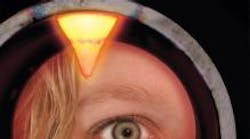Edited by Leland Teschler
I/O modules and terminal-block-type devices typically mount this way.
DIN rails accept modules designed to snap onto the rail. DIN-rail dimensions are standard so DIN-rail-compatible modules from different manufacturers can all coexist on the same DIN rail. However, I/O racks come in a variety of different dimensions. They are sized to accommodate different families of I/O modules. These modules may have similar electrical functions but will differ in physical size, number of channels offered, and so forth.
Racks can also differ in the type of modules they handle. For example, some may work only with digital I/O.
But regardless of the style, I/O modules solder into racks rather than snap-in as with DIN rails. The soldered-in connections offer more protection from vibration and other factors common to harsh environments.
It is typical for I/O racks to incorporate pull-up resistors. These sit between one of the I/O module pins and the corresponding control terminal connection on the rack. Electrically, the pull-up resistor resides between the module output pin and the plus-side logic supply. It lets modules synthesize a negative-true logic level while also providing a connection to accommodate positive-true logic schemes, if need be. Module makers install pull-up resistors on the rack connections rather than on the modules themselves to help keep the physical size of the module small, and to enhance the stability of the module output signals.
Opto22 (opto22.com) provided information for this article
About the Author
Leland Teschler
Lee Teschler served as Editor-in-Chief of Machine Design until 2014. He holds a B.S. Engineering from the University of Michigan; a B.S. Electrical Engineering from the University of Michigan; and an MBA from Cleveland State University. Prior to joining Penton, Lee worked as a Communications design engineer for the U.S. Government.
